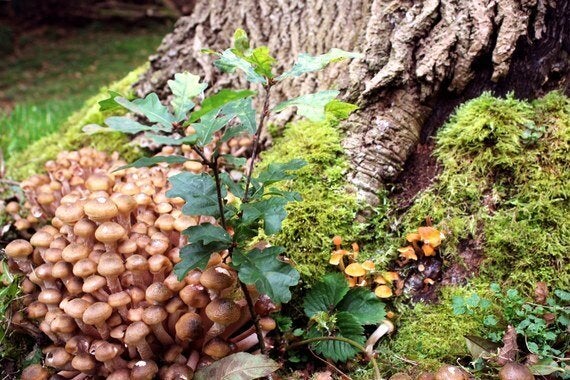Like many environmental campaigners I often find myself turning to economic arguments to explain the value of trees and woods to society. Trees perform so many services that have tangible value -absorbing carbon, improving air quality, providing protection against flooding, and even contributing to the health and well-being of people around them. These are all useful arguments in a context of budget restrictions and economic uncertainty, however for those who feel that trees and woods are beautiful and important in their own right, such arguments can feel cold and cynical. It is frustrating to feel that trees and woods need to 'earn their keep' rather than being protected for the wonderful things they are.

The UK is one of the least wooded countries in Europe with just 14% cover, and only 2% of the UK has been continuously wooded since the first maps were created just over 400 years ago. These ancient woodland sites are the only possible remnants of the 'wildwood' that covered the landscape after the last ice age. As well as being precious ecologically and historically, ancient woodland cannot be planted, moved or replaced. It is a finite, living resource.
With so little remaining it feels obvious that ancient woods should be protected, and many assume they already are. Unfortunately they are not. An inventory of confirmed ancient woodland is maintained by Natural England, and its special status is recognised in the UK's planning policy framework. Sadly this offers no legal protection, and is very open to interpretation. The wording states that damage or destruction of irreplaceable habitats such as ancient woodland or individual ancient trees should be avoided, 'unless the need for, and benefits of, the development in that location clearly outweigh the loss'. Take a moment to think what might qualify as 'outweighing the loss' of something irreplaceable, complex, and living. A petrol station? A quarry? Houses? All of these are real examples of things that have received planning permission at the expense of ancient woodland.
Ancient woodlands that have survived as green islands in urban or arable landscapes are still not shown the respect they deserve. In Sheffield, where campaigners are already battling the council's policy of removing street trees, three ancient woods have been proposed as storage sites for floodwater. Their existence will already be contributing to flood control, however it seems that this is not enough to give them a free pass. Flooding these woods with polluted run-off water for a sustained period could harm the trees and cause irreparable damage to the flora, fauna and fungi that form their unique ecosystem. Support the Woodland Trust's objection to this policy here.

Other ancient woods - such as Coombe Wood in Dorset - have been eyed up by developers and councils as sites that could count towards their quota of 'suitable areas of natural green space' (SANGS) around new housing developments. A SANGS quota is intended to ensure that the development of housing is balanced by investment in green space to provide the increased population with spaces for healthy outdoor leisure. Designating existing ancient woodland as SANGS subverts this, creating nothing new, and putting increased pressure from visitors, pollution and access infrastructure onto a fragile ecosystem that already exists and should be protected.
These instances of trying to make ancient woodland serve some additional purpose reveals how little it is valued in our society, despite all the evidence of its importance to conservation, heritage and the environment. To justify its existence it has to work for humans - even though it was here long before human infrastructure sprang up around it. If society took the same attitude to endangered animals we might expect to find Snow Leopards towing trolleys around supermarket carparks, or Red Kites being trained to litter pick from council verges.
The news that trees communicate with each other, share energy to support struggling neighbours, and recognise their own offspring through a fungal 'Wood Wide Web' has recently caught the public imagination. Peter Wohlleben's book The Hidden Life of Trees has enchanted people with the idea of trees as social beings with comparable concerns and priorities as a human community. This new perspective on woods and trees invites people to wonder at them for their fascinating complexity as living systems rather than for their role as 'green infrastructure'. This is the key to there being a future for the UK's incredible woodland and trees. People need to care for them and want them in their lives, otherwise their fate is in the fickle hands of a fluctuating economy, their prospects rising and falling like the price of oil on the stock exchange.
Sign this petition to help get ancient woodland statutory legal protection:https://petition.parliament.uk/petitions/168784
Add your voice to the Charter for Trees, Woods and People at treecharter.uk
